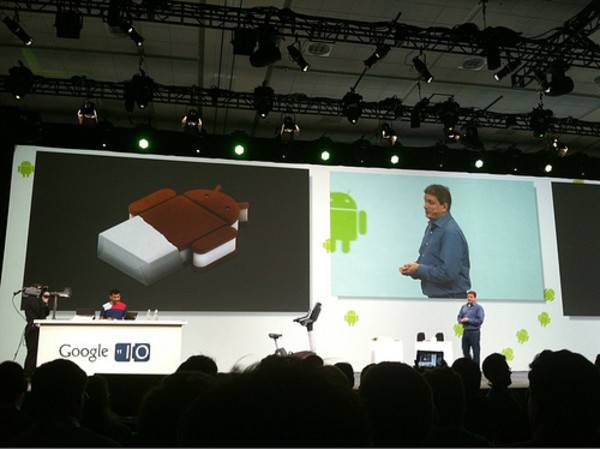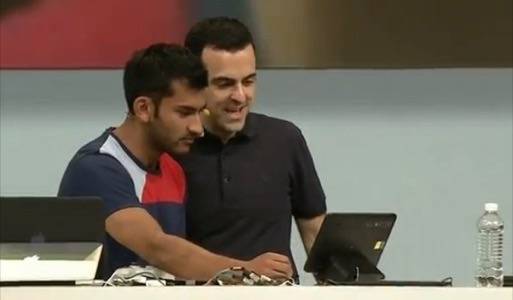As promised, Google’s upcoming version of its Android mobile operating system, code-named Ice Cream Sandwich, will merge the two different versions of Android in existence today. At present, Android-based smartphones run Gingerbread (Android 2.3) or older, while Android-based tablet computers run Honeycomb (Android 3.0). With Ice Cream Sandwich, due out later this year, that situation will begin to change.

Officially announced at Google I/O, the developer conference held this week in San Francisco, Ice Cream Sandwich will introduce some of the user interface concepts now found in Honeycomb. This includes, among other things, the “Action Bar,” which puts contextual actions at the top of the screen, and which vary by application. Ice Cream Sandwich will also bring Honeycomb’s “holographic user interface, more multitasking, the new launcher and richer widgets,” says Google. How exactly these tablet-inspired features will be ported to the smaller screen, or in which cases they would be ported, is still somewhat unclear.

According to Google, Ice Cream Sandwich will intelligently adapt itself to the form factor it’s running on and provide developers with APIs to modify other elements of the interface when needed. For example, developers will be able to change the size of the above-mentioned Action Bar, so it takes up more or less room on the screen.
A new Ice Cream Sandwich API was demonstrated on stage at the I/O event, however. It was a head-tracking API called Virtual Camera Operator which detects when a person is speaking, and then refocuses the device’s front-facing camera on that person. When another person comes into frame and begins talking, the camera will then focus on that person instead.
The use cases for this in video conferencing are clearly apparent. With Microsoft’s acquisition of Skype, and its promised integration into Xbox and Kinect, it won’t be long before you’ll video chat from your TV with others while Kinect’s camera follows you around the room. With this Camera Operator API, that same tracking feature will be available on the mobile side as well. In other words, our devices are about to get a lot smarter, and soon. They’re going to “see” us, on both small screens and big.

One OS, Everywhere
As Google describes Ice Cream Sandwich, which seems to have no version number attached at present, it will be the “one OS, everywhere.” And by everywhere, Google really means everywhere. The company’s vision for its Android operating system is one that sees the OS powering any number of consumer electronics devices, and even home devices and appliances. With the Android@Home framework, Google is helping to build the Internet of Things. (More on that program here.)
This begs the question, what of ChromeOS, then? What will become of Google’s other operating system, especially when Google is saying Ice Cream Sandwich will power laptops, too?
We may find out more about that today. Stay tuned.
In the meantime, Google has released an incremental update to Honeycomb (version 3.1) packed with several new features for tablets. This includes the following, according to Google’s Android Developers blog:
- Open Accessory API. This new API provides a way for Android applications to integrate and interact with a wide range of accessories such as musical equipment, exercise equipment, robotics systems, and many others.
- USB host API. On devices that support USB host mode, applications can now manage connected USB peripherals such as audio devices. input devices, communications devices, and more.
- Input from mice, joysticks, and gamepads. Android 3.1 extends the input event system to support a variety of new input sources and motion events such as from mice, trackballs, joysticks, gamepads, and others.
- Resizable Home screen widgets. Developers can now create Home screen widgets that are resizeable horizontally, vertically, or both.
- Media Transfer Protocol (MTP). Applications can now receive notifications when external cameras are attached and removed, manage files and storage on those devices, and transfer files and metadata to and from them.
- Real-time Transport Protocol (RTP). API for audio. Developers can directly manage on-demand or interactive data streaming to enable VOIP, push-to-talk, conferencing, and audio streaming.
Android 3.1 is available now, more details are here.
Image credit, virtual camera operator: Android Community








